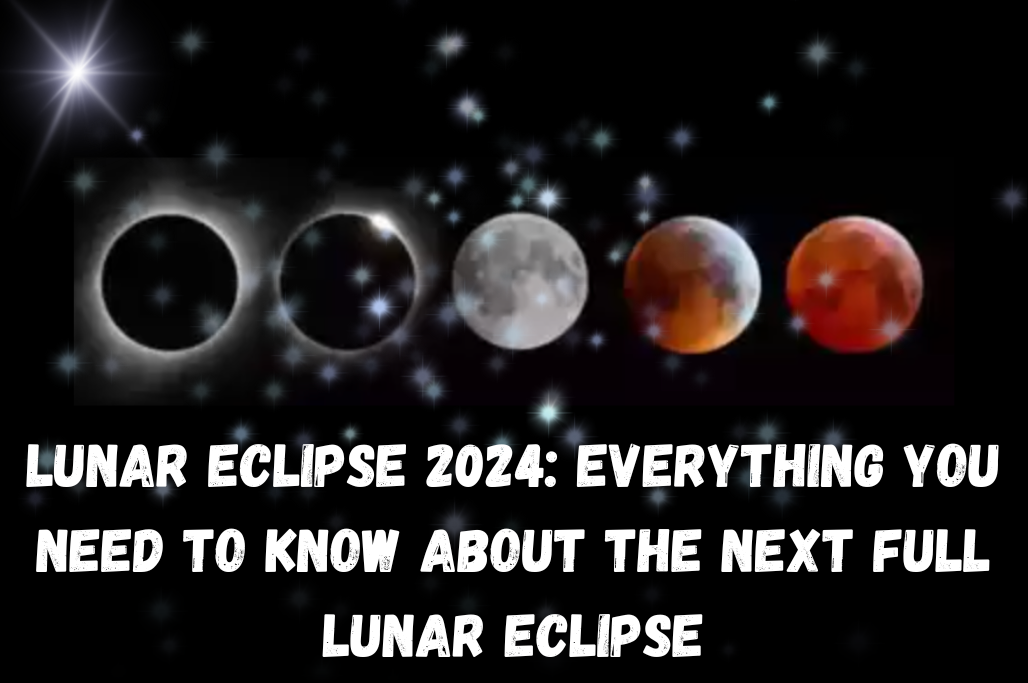The lunar eclipse is one of nature’s most mesmerizing celestial events, where the moon passes through the Earth’s shadow, turning its glowing surface into a breathtaking reddish hue. For centuries, eclipses have captured the imagination of skywatchers and astronomers alike, and the excitement for the next full lunar eclipse is palpable across the globe. If you’re wondering when the next eclipse will occur or want to know more about these astronomical wonders, this guide will provide all the information you need.
In this article, we will explore the latest news on the next lunar eclipse, dive into what makes lunar eclipses so special, and offer tips on how to best observe them. Whether you’re an avid skywatcher or a casual observer, get ready for a thrilling night of astronomy.
What is a Lunar Eclipse?
A lunar eclipse occurs when the Earth comes directly between the sun and the moon, casting a shadow on the moon’s surface. Unlike solar eclipses, lunar eclipses are safe to view with the naked eye, making them accessible to anyone with a clear view of the night sky. There are three types of lunar eclipses:
- Total Lunar Eclipse: The entire moon is covered by the Earth’s shadow, often resulting in a “blood moon” effect, where the moon takes on a reddish hue due to the Earth’s atmosphere filtering the sunlight.
- Partial Lunar Eclipse: Only a portion of the moon enters the Earth’s shadow, creating a visible dark patch on the moon’s surface.
- Penumbral Lunar Eclipse: The moon passes through the Earth’s outer shadow (penumbra), causing a subtle shading on the moon, which is often difficult to observe without telescopes.
The upcoming next full lunar eclipse is expected to be a total lunar eclipse, meaning viewers will get to witness the stunning “blood moon” effect.
When is the Next Lunar Eclipse?
The next lunar eclipse is slated to occur on March 25, 2024, and it will be visible in parts of North America, including large portions of the USA. Mark your calendars because this will be a total lunar eclipse, offering a spectacular display for skywatchers. During this eclipse, the moon will pass entirely through the Earth’s shadow, turning into a blood moon, which is one of the most sought-after celestial sights.
What Makes the Next Full Lunar Eclipse Special?
The next full lunar eclipse on March 25, 2024, is special for several reasons. Firstly, it’s a total eclipse, meaning the entire moon will be covered by the Earth’s shadow, creating a brilliant reddish hue. Secondly, it will be visible in the early evening for most of the USA, making it easier for people to observe without staying up all night.
Additionally, this eclipse coincides with a brightest moon phenomenon. The brightness of the moon during a full eclipse can vary, but when the moon is at its closest point to the Earth in its orbit (a perigee), it can appear significantly larger and brighter. When this happens during a lunar eclipse, it’s referred to as a “super blood moon.”
For skywatchers in North America, this eclipse will offer a perfect opportunity to witness the moon in its glory.
How to View the Next Full Lunar Eclipse
Unlike a solar eclipse, a lunar eclipse is completely safe to view with the naked eye. However, to get the best viewing experience, here are some tips:
- Find a Clear View of the Sky: Look for a location that is free from tall buildings, trees, and city lights. A high point or an open field is ideal for viewing the eclipse.
- Use Binoculars or a Telescope: While a lunar eclipse can be enjoyed with the naked eye, using binoculars or a telescope will enhance the view, allowing you to see more detail on the moon’s surface as it passes through the shadow.
- Bring a Camera: Lunar eclipses are great for photography. With a DSLR camera, you can capture stunning images of the eclipse. Make sure to use a tripod for stability.
- Timing is Key: For the next full lunar eclipse, the entire event will last about 3 hours, but the total eclipse phase (when the moon turns red) will last for roughly 1 hour. Be sure to check local times for the exact start of the eclipse in your area.
The Science Behind the Brightest Moon
When we talk about the brightest moon, we are often referring to a supermoon, which occurs when a full moon coincides with its closest approach to Earth. During a supermoon, the moon can appear up to 14% larger and 30% brighter than a regular full moon.
The next full moon eclipse in March 2024 may also coincide with a supermoon, giving us the brightest moon during a total lunar eclipse. This rare event adds an extra layer of excitement to an already captivating astronomical phenomenon.
The Cultural Significance of Lunar Eclipses
For centuries, lunar eclipses have held significant cultural and spiritual meaning. In many cultures, eclipses were seen as omens or signs from the gods. The dramatic transformation of the moon during a total eclipse often inspired awe, fear, or reverence.
In modern times, lunar eclipses are celebrated as natural wonders, with people gathering in observatories, parks, and even rooftops to witness the spectacle. The blood moon effect, in particular, has captivated the imagination of people worldwide, making each eclipse a highly anticipated event.
FAQs about Lunar Eclipse, Next Lunar Eclipse, and Brightest Moon
Q: What is a lunar eclipse?
A: A lunar eclipse occurs when the Earth comes between the sun and the moon, casting a shadow on the moon. There are three types of lunar eclipses: total, partial, and penumbral.
Q: When is the next lunar eclipse?
A: The next lunar eclipse will occur on March 25, 2024, and it will be a total lunar eclipse, visible in parts of North America, including the USA.
Q: What is the difference between a lunar and solar eclipse?
A: A lunar eclipse occurs when the Earth’s shadow covers the moon, while a solar eclipse happens when the moon blocks the sun’s light, casting a shadow on the Earth.
Q: How can I view the next lunar eclipse?
A: The next full lunar eclipse can be viewed with the naked eye, but using binoculars or a telescope can enhance the experience. Find a clear view of the sky, and check local times for the eclipse’s start.
Q: What is the brightest moon?
A: The brightest moon usually refers to a supermoon, which occurs when a full moon is at its closest approach to Earth. Supermoons appear larger and brighter than regular full moons.
Conclusion
The upcoming next lunar eclipse on March 25, 2024, promises to be a celestial event that should not be missed. As a total lunar eclipse, it will offer viewers a chance to see the moon transform into a blood moon, with its surface turning a deep reddish hue. Coupled with the possibility of witnessing the brightest moon during a supermoon, this eclipse will be one of the most stunning astronomical events of the year.
So, mark your calendars and prepare to enjoy this incredible natural spectacle. Whether you’re a seasoned astronomer or just curious about the night sky, the next full lunar eclipse is sure to be a memorable event for all.

